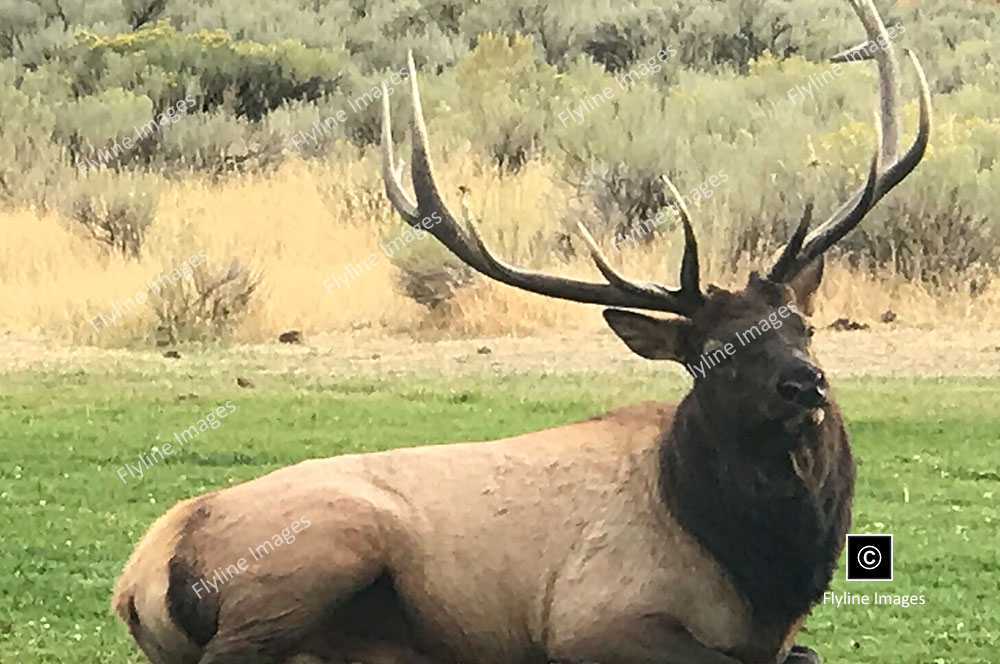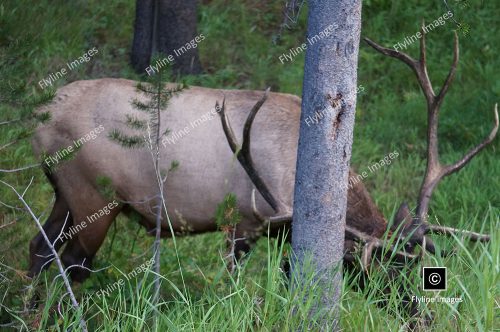Bull Elk Mammoth Springs Yellowstone National Park
Elk 22
$5.00
Description
Purchase this photo for your use. The photo was taken in Yellowstone National Park. This magnificent Bull Elk was enjoying the green grass and sunshine at Mammoth Springs.
Image & Download Information
For this product, we have provided 3 image size options, Large 4000 x 2500, Medium 2000 x 1250 and Small 1000 x 625. When you purchase this photo, you will receive an email confirmation of your order. That email will summarize your purchase and provide you with the download links for the images and videos you purchased.
MORE ABOUT THIS PHOTO
Every evening, as the sun descends behind the rugged horizon of Yellowstone National Park, a remarkable spectacle unfolds at Mammoth Hot Springs. Here, herds of elk, graceful and majestic, converge upon the warm, travertine landscapes, seeking refuge and respite. These elk, symbols of the wild and untamed, find in the thermal features and rich grasslands an ideal habitat, not just for foraging but also as a sanctuary from predators. The interaction between the elk and the geothermal environment of Mammoth Hot Springs offers a fascinating glimpse into the adaptability and resilience of wildlife, serving as a poignant reminder of nature’s intricacies and the delicate balance that sustains it.
At first glance, the elk may seem out of place in this otherworldly landscape of steaming vents and colorful terraces. But upon closer examination, it becomes clear that these creatures have found a way to coexist harmoniously with the unique conditions presented by the thermal features.
Scientists believe that the warm waters and mineral-rich soils of Mammoth Hot Springs provide vital nutrients for the elk, helping them thrive in an otherwise harsh environment. The travertine formations, created by mineral deposits from the hot springs, also act as natural barriers and shelters for the animals.
But perhaps most intriguing is the behavior of the elk during their time at Mammoth Hot Springs. They have been observed rolling around in the warm waters, creating “elk wallows” that serve as social and grooming areas for the herd. This behavior not only helps remove parasites from their fur, but also releases pheromones that communicate dominance and hierarchy within the group.
The elk at Mammoth Hot Springs serve as a prime example of nature’s ability to adapt and thrive in even the most extreme conditions. And while these thermal features may seem otherworldly to us, they are an essential part of the delicate ecosystem that supports these magnificent creatures. As visitors to Yellowstone National Park, it is our responsibility to appreciate and protect this unique environment, ensuring that future generations can witness the wonder and beauty of Mammoth Hot Springs and its inhabitants.
So next time you find yourself in the presence of these remarkable elk, take a moment to marvel at the incredible intersection of nature and geothermal forces, and remember the importance of preserving our natural world for all species to enjoy. So let’s do our part in being responsible stewards of this magnificent landscape, so that future generations can continue to witness the wonder and beauty of Mammoth Hot Springs and its inhabitants.
Let us learn from these majestic creatures and their adaptability, and work towards maintaining the delicate balance of our natural world. After all, it is only by preserving these unique environments that we can truly appreciate the wonders of nature and its intricate complexities. As John Muir once said, “In every walk with nature one receives far more than he seeks.” And at Mammoth Hot Springs, this sentiment rings truer than ever before. So let’s continue to explore, learn, and preserve this extraordinary place for generations to come.






